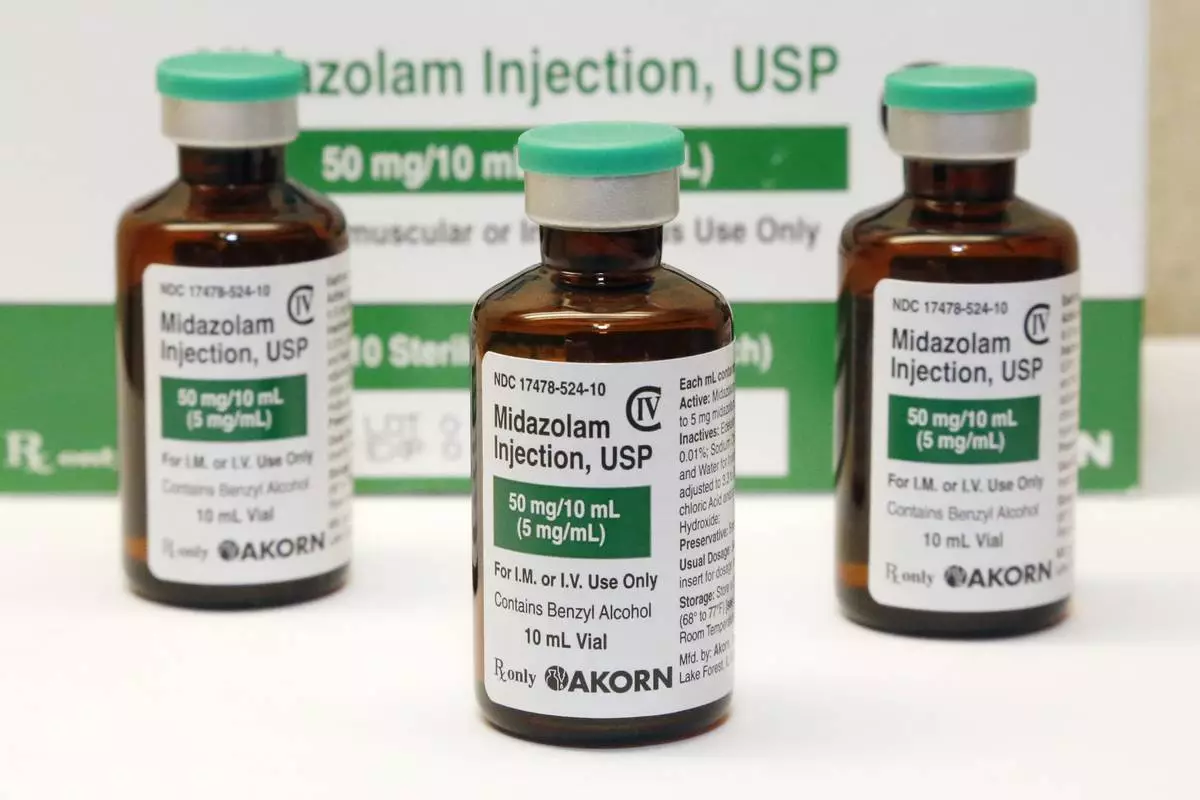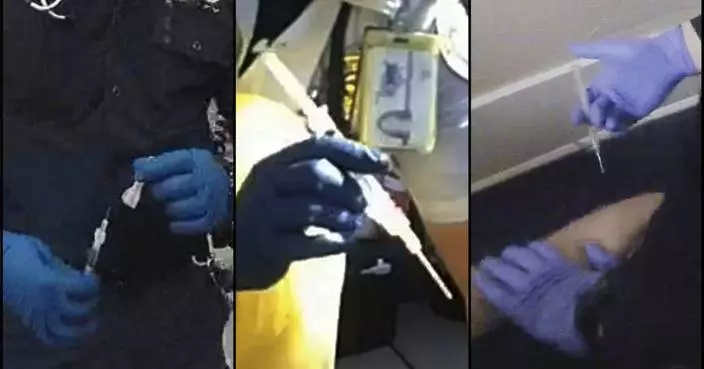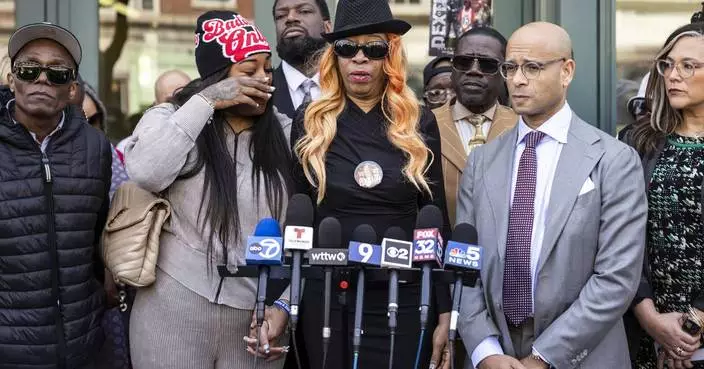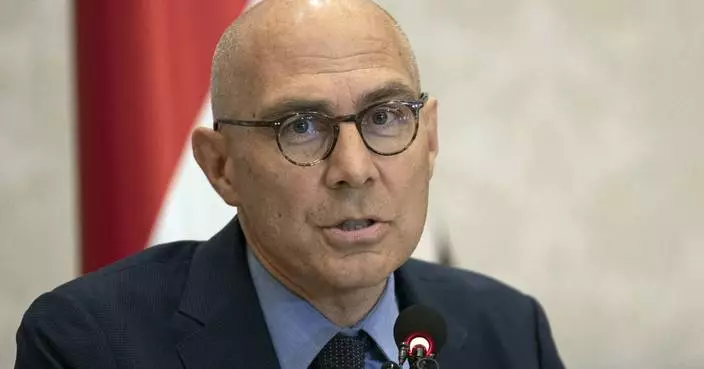Football Association of Thailand president Somyot Poompanmuang says five players and two match officials from the top-flight national league are among 12 people arrested for alleged match-fixing.

Football Association of Thailand President Somyot Poompanmuang gives a traditional Thai greeting "wai" after a press conference in Bangkok, Thailand, Tuesday, Nov. 21, 2017. (AP Photo/Sakchai Lalit)
Somyot held a news conference Tuesday with national police chief Chakthip Chaijinda to announce an investigation was underway into the results of a match in July and three matches in September.
Police reported that four players from the Navy club and one from Nakhon Ratchasima were allegedly paid up to 200,000 Thai baht ($6,100) to manipulate results.
The FAT and Royal Thai Police used information from data services company Sportradar as part of the investigation after reports of an unusual number of goals being scored in the late stages of the games.
"Match-fixing has been committed for a long time," Somyot said during the news conference at the Royal Thai Police headquarters. "It's time we eradicate this wrongdoing which is like a bad diseased of our body that needs to be cured."

Football Association of Thailand President Somyot Poompanmuang talks to reporters during a press conference in Bangkok, Thailand, Tuesday, Nov. 21, 2017. Somyot said five players and two match officials from the top-flight national league are among the 12 people arrested for alleged match fixing. (AP Photo/Sakchai Lalit)
Chakthip said 12 people had been released on bail. Court details were not immediately available.
"I have to give big credit to the Royal Thai Police for their work or otherwise we will see the fall of Thai football if match-fixing is not tackled," Somyot said.
Chakthip said the alleged fixing was coordinated through a network comprising players, two referees, a club official and domestic and international investors.
He said the match and club officials can face up to 10 years in prison and fines if found guilty of match-fixing, and players could face up to five years in jail and fines.
On Wednesday, the Asian Football Confederation said in a statement that it has a "a zero-tolerance approach against those who attempt to manipulate matches in Asia and supports the strongest possible retribution against those who have been found guilty."
The practice of giving sedatives to people detained by police spread quietly across the nation over the last 15 years, built on questionable science and backed by police-aligned experts, an investigation led by The Associated Press has found.
At least 94 people died after they were given sedatives and restrained by police from 2012 through 2021, according to findings by the AP in collaboration with FRONTLINE (PBS) and the Howard Centers for Investigative Journalism. That’s nearly 10% of the more than 1,000 deaths identified during the investigation of people subdued by police in ways that are not supposed to be fatal.
Supporters say sedatives enable rapid treatment for drug-related behavioral emergencies and psychotic episodes, protect front-line responders from violence and are safely administered thousands of times annually to get people with life-threatening conditions to hospitals. Critics say forced sedation should be strictly limited or banned, arguing the medications, given without consent, are too risky to be administered during police encounters.
The injections spanned the country, from a desert in Arizona to a street in St. Louis to a home in Florida. They happened in big cities such as Dallas, suburbs like Lithonia, Georgia, and rural areas such as Dale, Indiana. They occurred in homes, in parking lots, in ambulances and occasionally in hospitals where police encounters came to a head.
It was impossible to determine the role sedatives may have played in each of the 94 deaths, which often involved the use of other potentially dangerous force on people who had taken drugs or consumed alcohol. Medical experts told the AP their impact could be negligible in people who were already dying; the final straw that triggered heart or breathing failure in the medically distressed; or the main cause of death when given in the wrong circumstances or mishandled.
While sedatives were mentioned as a cause or contributing factor in a dozen official death rulings, authorities often didn’t even investigate whether injections were appropriate. Medical officials have traditionally viewed them as mostly benign treatments. Now some say they may be playing a bigger role than previously understood and deserve more scrutiny.
Here are takeaways from AP’s investigation:
The investigation found that about half those who died after injections were Black.
Behind the racial disparity is a disputed medical condition called excited delirium, which fueled the rise of sedation outside hospitals. Critics say its purported symptoms, including “superhuman strength” and high pain tolerance, play into racist stereotypes about Black people and lead to biased decisions about who needs sedation.
Guidelines require paramedics to make rapid, subjective assessments of the potential dangers posed by the people they treat. Only those judged to be at high risk of harming themselves or others are supposed to be candidates for shots.
But the investigation found that some whose behavior did not meet the bar — who had already largely calmed down or in rare cases even passed out — were given injections. In some cases, paramedics cited fears that people would become violent on the way to hospitals.
The 2019 death of Elijah McClain in Aurora, Colorado, put a spotlight on the practice. A paramedic convicted of giving McClain an overdose of ketamine was sentenced last month to five years in prison, and a second paramedic is scheduled to be sentenced Friday.
Time and time again, the AP found, agitated people who were held by police facedown, often handcuffed and with officers pushing on their backs, struggled to breathe and tried to get free. Citing combativeness, paramedics administered sedatives, further slowing their breathing. Cardiac and respiratory arrest often occurred within minutes.
Paramedics drugged people who were not a threat to themselves or others, violating treatment guidelines. Medics often didn’t know whether other drugs or alcohol were in people’s systems, although some combinations cause serious side effects.
Police officers sometimes suggested paramedics should give shots to suspects they were detaining, a potential abuse of their power.
The majority of those who died had been restrained facedown in handcuffs, which can restrict breathing.
Experts say giving sedatives to someone who is already struggling to breathe can create a risk for death, because the drugs slow the respiratory drive. If they are unable to get enough oxygen and blow off enough carbon dioxide, their hearts can stop or they can stop breathing.
The use of sedatives by emergency medical responders outside hospitals spread rapidly over the last two decades based on a now-discredited theory. Law enforcement leaders in the 2000s were concerned by the number of people who were dying after they were shocked with police Tasers and forcibly restrained.
They began promoting a new strategy calling for officers to view encounters with severely agitated people, including those experiencing psychotic episodes or high on drugs, as medical emergencies. Rather than use force to try to gain compliance, officers were encouraged to call emergency medical services to sedate people and transport them to hospitals.
Supporters of this approach promoted a term to describe behavior they said put combative people at risk of sudden death: excited delirium.
The strategy received a boost in 2009 when the American College of Emergency Physicians recognized excited delirium and urged the rapid use of ketamine, midazolam and other drugs to treat it.
EMS agencies quickly adopted excited delirium protocols, though drugs like ketamine had not been thoroughly studied in the field. The paramedics who injected McClain with ketamine said they were following one such policy.
Critics have argued that the concept of excited delirium shifts blame from police in the deaths. The National Association of Medical Examiners and the American College of Emergency Physicians distanced themselves from the concept in 2023.
Deaths involving police often result in news headlines and criminal investigations that focus on the use of force by officers. But the AP investigation found that medical personnel who gave sedatives were often largely ignored.
The use of sedatives in nearly half the deaths has not been previously reported by news outlets. Many reasons explain this lack of attention.
Police narratives omit the use of sedatives due to medical privacy concerns. EMS treatment records are not subject to public records laws. Medical examiners view sedatives as treatments and rarely cite them as contributing factors in deaths. Investigators are unknowledgeable about the role sedatives play and uninterested in diving into the complicated details.
Associated Press researcher Rhonda Shafner contributed from New York.
Contact AP’s global investigative team at Investigative@ap.org or https://www.ap.org/tips/

FILE - This July 25, 2014 photo shows vials of the sedative midazolam at a hospital pharmacy in Oklahoma City. An investigation led by The Associated Press published in 2024, has found the practice of giving sedatives to people detained by police spread quietly over the last 15 years, built on questionable science and backed by police-aligned experts. (AP Photo/File)












